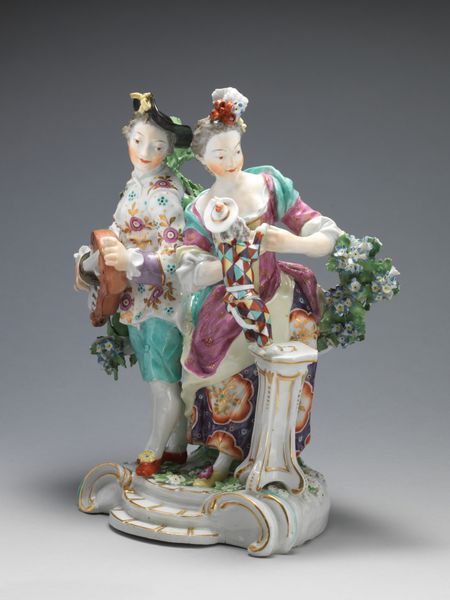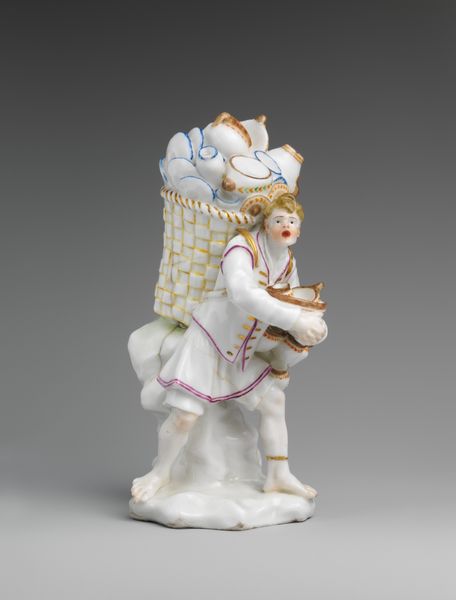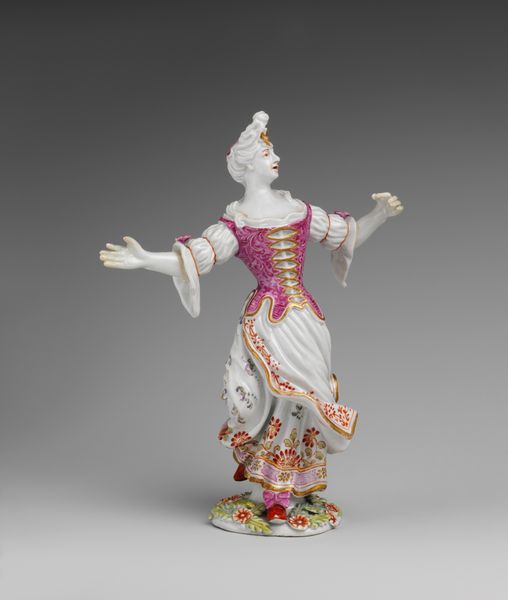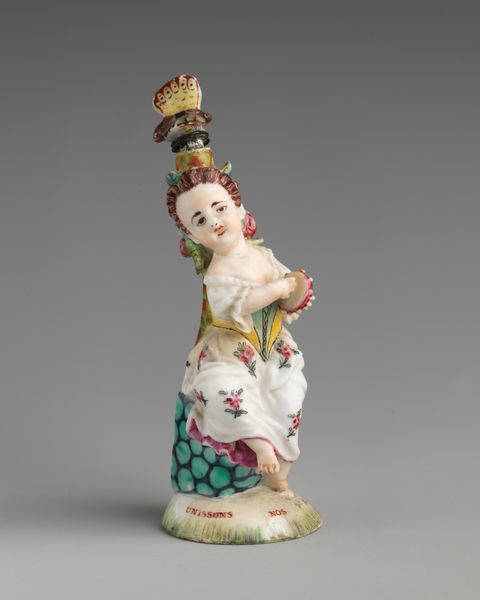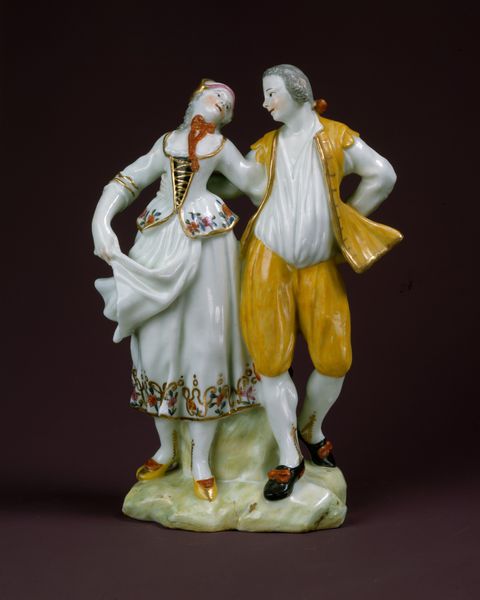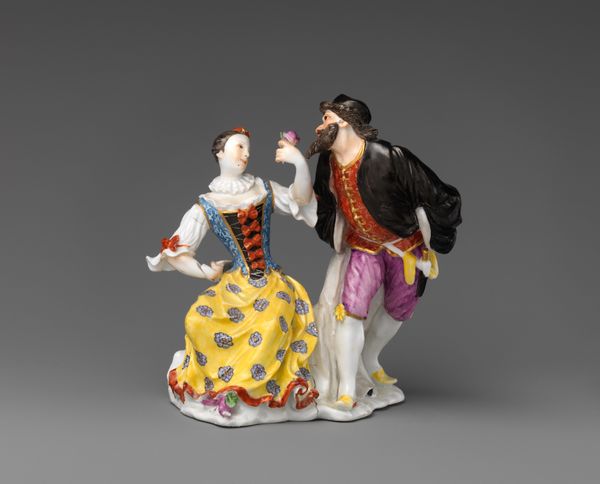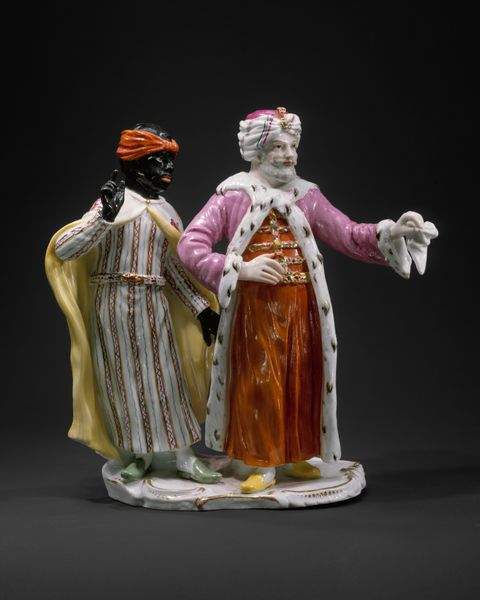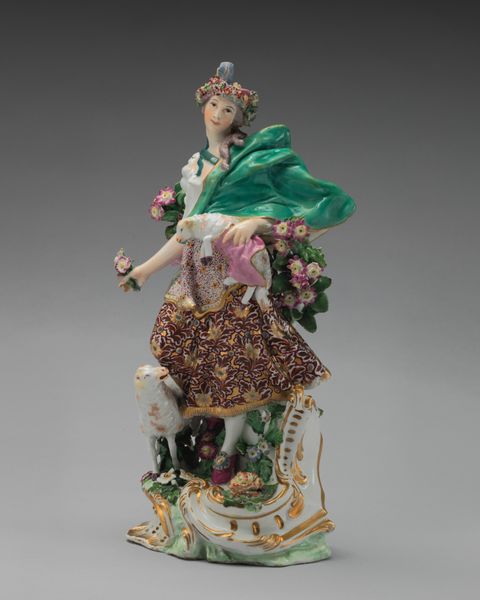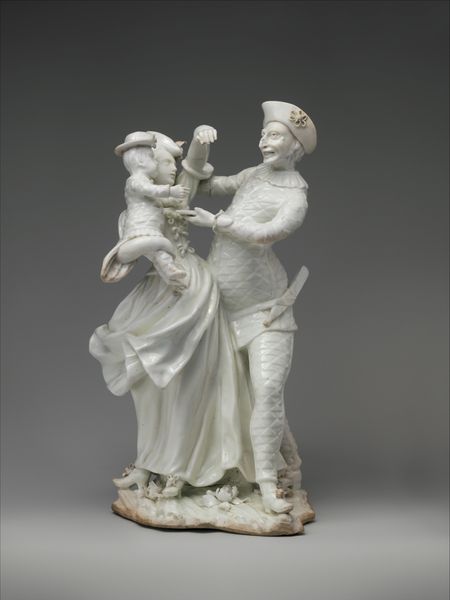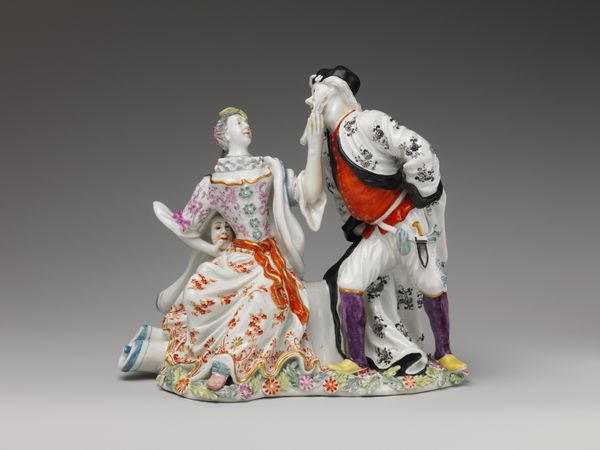
ceramic, porcelain, sculpture
#
portrait
#
sculpture
#
ceramic
#
porcelain
#
figuration
#
sculpture
#
men
#
genre-painting
#
decorative-art
#
miniature
#
rococo
Dimensions: Height: 6 in. (15.2 cm)
Copyright: Public Domain
Curator: Before us, we have "Peasant Dancers," a porcelain sculpture crafted by Johann Friedrich Eberlein, dating from 1730 to 1740. What strikes you first about it? Editor: It's bursting with exuberance! The tilted, twirling poses... there’s almost a frenetic energy about this couple locked in their dance. It feels like a visual echo of pure, unadulterated joy. Curator: Eberlein, working with the incredibly demanding medium of porcelain, captured not just the form, but also a fleeting moment of social ritual. Notice the details: the floral decoration, the gilded accents; all testament to the rococo aesthetic and the culture of luxury production within which this was conceived. Editor: Absolutely. The figures' attire, while "peasant" in name, hints at a romanticized, perhaps even idealized view of the lower classes. And these kinds of playful genre scenes gain popularity at the time with paintings... This sculpture reflects that through the figures themselves. The couple even brings to mind classical depictions of bacchanals, infused with their frenzied, intoxicating spirit. Curator: Exactly. And think about the performative nature of class during this time. These porcelains served as conversation pieces, luxury objects intended to evoke specific narratives and perhaps reinforce or question existing social hierarchies within the domestic sphere. Editor: The choice of dance as the central subject matter is also telling, don't you think? It's a very communal, unifying gesture... an almost ecstatic release, where ordinary boundaries between people soften and temporarily vanish. Curator: It also alludes to broader anxieties and fascinations circulating within elite circles, highlighting that even a seemingly lighthearted sculpture like this embodies complex negotiations of power, representation, and labor. Editor: Indeed. Eberlein seems to have condensed the ephemeral quality of life’s fleeting pleasures into a lasting, visual allegory. Curator: Thinking about Eberlein's technique in concert with his choice of subject and materials allows us to approach it not merely as an ornamental object but as a fascinating point of intersection within the socio-economic fabric of its time. Editor: For me, considering how the cultural meaning embedded into symbols—as conveyed through this sculpture's spirited figures—we gain some better understanding about what kind of joyful echoes resonate over the years.
Comments
No comments
Be the first to comment and join the conversation on the ultimate creative platform.
